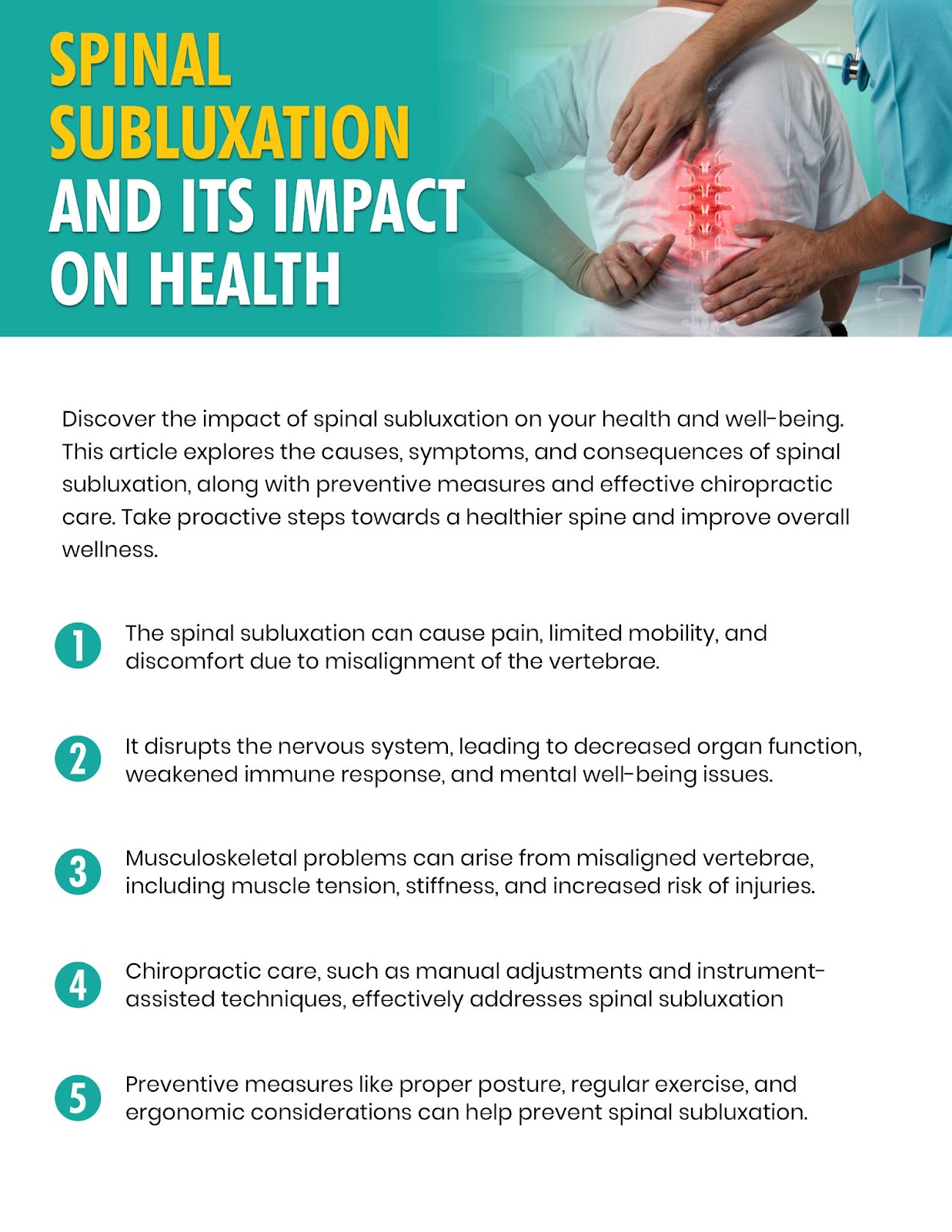Discover the impact of spinal subluxation on your health and well-being. This article explores the causes, symptoms, and consequences of spinal subluxations, along with preventive measures and effective chiropractic care. Take proactive steps towards a healthier spine and improve overall wellness.
- The spinal subluxations can cause pain, limited mobility, and discomfort due to misalignment of the vertebrae.
- It disrupts the nervous system, leading to decreased organ function, weakened immune response, and mental well-being issues.
- Musculoskeletal problems can arise from misaligned vertebrae, including muscle tension, stiffness, and increased risk of injuries.
- Chiropractic care, such as manual adjustments and instrument-assisted techniques, effectively addresses spinal subluxations.
Preventive measures like proper posture, regular exercise, and ergonomic considerations can help prevent spinal subluxation.

In conclusion, spinal subluxations represent a complex topic within the realm of chiropractic and musculoskeletal health. These partial misalignments of vertebral structures can potentially impact nerve function, leading to discomfort and reduced overall well-being. While proponents of chiropractic care assert that spinal adjustments can alleviate subluxations and promote natural healing, the scientific consensus surrounding the significance of subluxations remains debated. Some studies indicate a potential link between spinal adjustments and pain relief, yet more rigorous research is required to establish concrete causality and efficacy. It is essential to approach the management of spinal subluxations with a balanced perspective, considering individual patient needs, preferences, and evidence-based practices. Collaborative efforts among chiropractors, medical professionals, and researchers are vital to further our understanding of spinal subluxations and their optimal management strategies, ensuring the best possible care for patients’ musculoskeletal health.
